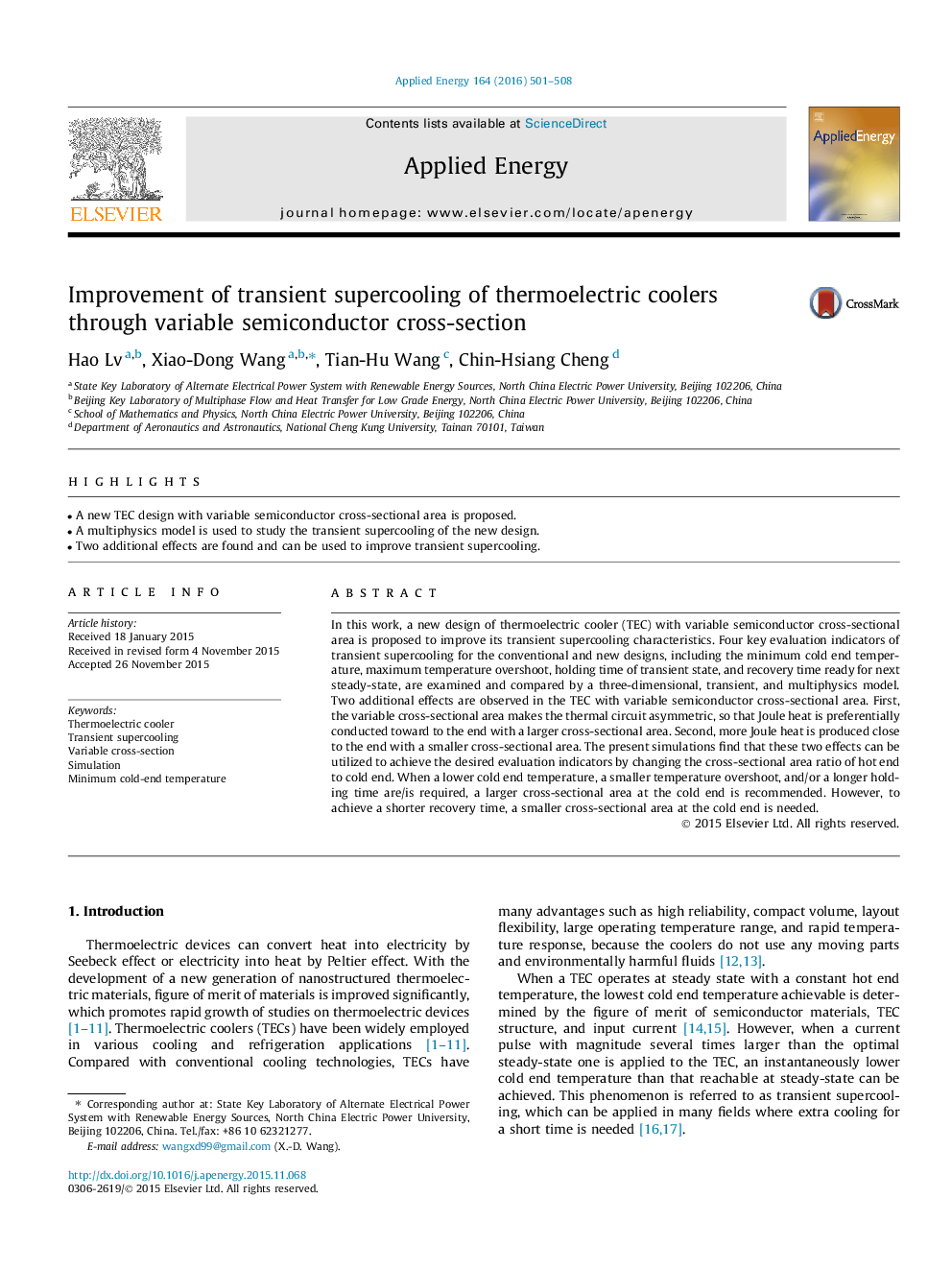| Article ID | Journal | Published Year | Pages | File Type |
|---|---|---|---|---|
| 6684269 | Applied Energy | 2016 | 8 Pages |
Abstract
In this work, a new design of thermoelectric cooler (TEC) with variable semiconductor cross-sectional area is proposed to improve its transient supercooling characteristics. Four key evaluation indicators of transient supercooling for the conventional and new designs, including the minimum cold end temperature, maximum temperature overshoot, holding time of transient state, and recovery time ready for next steady-state, are examined and compared by a three-dimensional, transient, and multiphysics model. Two additional effects are observed in the TEC with variable semiconductor cross-sectional area. First, the variable cross-sectional area makes the thermal circuit asymmetric, so that Joule heat is preferentially conducted toward to the end with a larger cross-sectional area. Second, more Joule heat is produced close to the end with a smaller cross-sectional area. The present simulations find that these two effects can be utilized to achieve the desired evaluation indicators by changing the cross-sectional area ratio of hot end to cold end. When a lower cold end temperature, a smaller temperature overshoot, and/or a longer holding time are/is required, a larger cross-sectional area at the cold end is recommended. However, to achieve a shorter recovery time, a smaller cross-sectional area at the cold end is needed.
Related Topics
Physical Sciences and Engineering
Energy
Energy Engineering and Power Technology
Authors
Hao Lv, Xiao-Dong Wang, Tian-Hu Wang, Chin-Hsiang Cheng,
